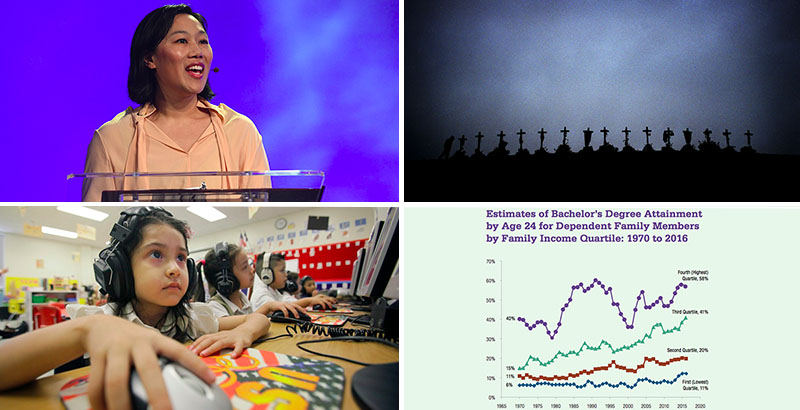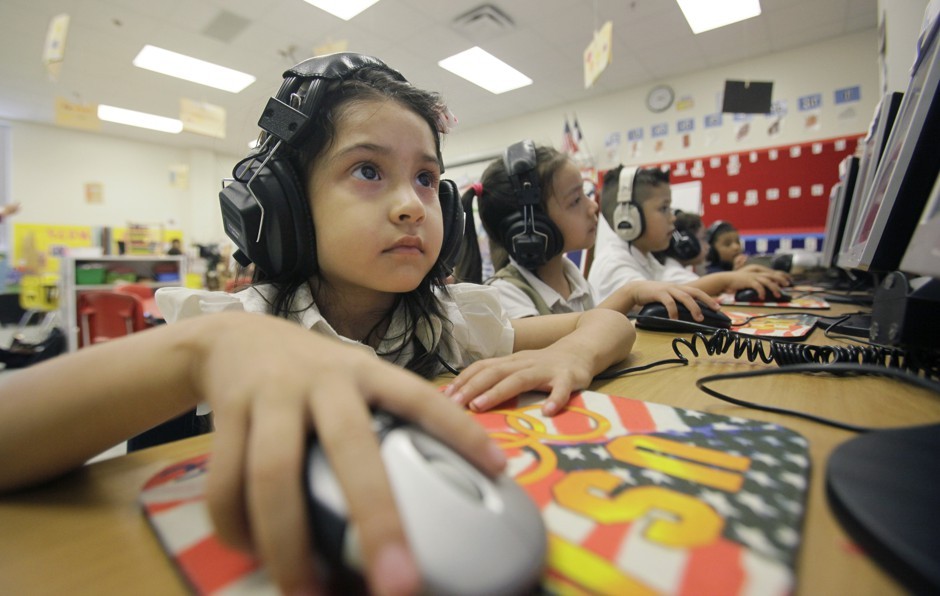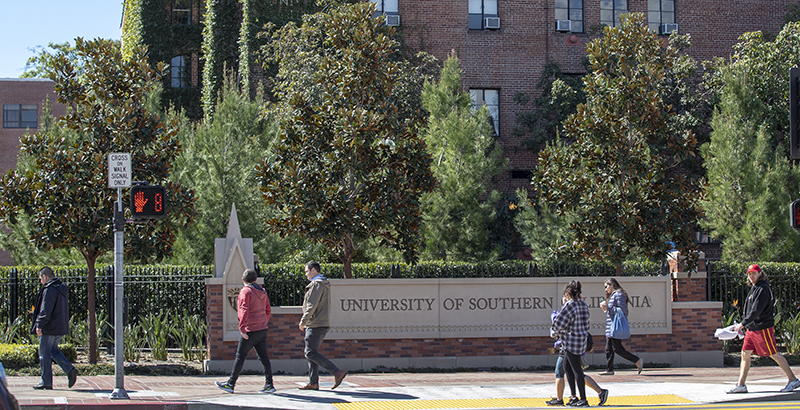The 11 Best Education Articles From April: Guiding First-Generation Students Through College, Lessons From Columbine, Doubling Down on Civics Education & More

Every month, we round up our most popular and buzzed-about articles from the past four weeks. (Go deeper: See our top highlights from March, February, January and beyond right here)
It was a month of big projects, noteworthy reports and monumental anniversaries here at The 74. Twenty years after the Columbine shooting, Mark Keierleber published multiple pieces in April about the fallout and legacy of the massacre. Elsewhere, we wrote about a school network that’s leading the way on civics education, profiled the escalating efforts to help low-income and first-generation high school graduates go on to succeed at college, and sat down with Priscilla Chan for an interview. You’ll find all that and more below. (You can always get our top news and analysis delivered straight to your inbox by signing up for The 74 Newsletter)
Here are the most read, shared and buzzed-about articles from April:

Exclusive: The number of high school seniors going on to college rose from 63 percent to 70 percent between 2000 and 2016, but about a third of students who enroll in college still have no degree six years later. That’s a statistic that alarms liberals and conservatives alike, writes Richard Whitmire, author of a new book that The 74 has published — The B.A. Breakthrough: How Ending Diploma Disparities Can Change the Face of America. You can buy the book, read excerpts and see special online extras at The74Million.org/Breakthrough.
In this chapter, Whitmire lays out the statistical underpinning for the book, which looks at the growing forces coming together across America to help low-income students — many of them young people of color and the first in their families to go — graduate from college. This group is more vulnerable than any other to leaving without a diploma and the one with the most to gain from getting their degrees. With a four-year college degree, over 40 percent of young people born into the U.S.’s lowest income bracket make the jump into the top two income brackets. With only a high school diploma, just 14 percent do. One reason, Whitmire reveals, for the big drop-off between college enrollment and completion is that most high schools have no idea how their students fare once they get to college — they are just generally proud of the numbers they send on to four-year institutions — so they aren’t in a position to advise their grads on which colleges have the best graduation rates. That too is changing and is part of the breakthrough. You can read the full chapter here. Other notable excerpts from March:
—The Game-Changing ‘Bot’ That’s Making College Selection Smarter: Colleges within the same “band”— meaning near-identical colleges with similar acceptance rates — often have radically different graduation rates, as much as 20 percentage points different. That huge swing in outcomes poses a real risk for high school students and their counselors, who mistakenly assume that the chances of graduating are equal at colleges that otherwise stack up the same. Enter Midwest software designer Matt Niksch, who created a College Counseling Bot that could calculate a student’s odds of getting into a particular college based on their academic record and then match those odds against that college’s graduation success record. They are now being used around the country. Read the full story.
—Selective Colleges Begin to Embrace the Community College Transfers They Once Spurned: Whitmire reveals how the attitudes of four-year colleges and universities — many defined by their exclusivity — are changing toward long looked-down-upon community college students. He spotlights elite UCLA, which now accepts thousands of high-achieving, low-income community college students each year, supporting them toward getting their four-year degrees. But more needs to be done to open a pathway for these deserving first-generation strivers, Whitmire argues. Read the full story.

Deep Dive: How do you revive a moribund democracy? That’s certainly the state of American political life, it seems. Even after a 2018 midterm election cycle that saw Americans vote, canvass and donate to campaigns in record numbers, fewer than half of eligible voters turned out last fall. Far fewer Americans read newspapers or volunteer for causes than in years past, and surveys consistently show a level of civic disengagement bordering on apathy: A shockingly small number of us could pass the exam we require immigrants to take in order to become citizens. In a new feature, Kevin Mahnken asks the experts: How do we fix things — if, indeed, they can be fixed? Few hold out hope for taking down the temperature of partisan discord, and the political media’s influence isn’t helping. Participation in the nation’s vast network of voluntary organizations, which have historically allowed us to form small communities around VFW halls and Boy Scout dens, has entered a phase of potentially terminal decline. If there’s a way out, many political scientists agree, it’s through education. Teaching the realities of American government and politics to students was a foundational mission of public education; but decades of inattention and a general aversion to bringing politics into the classroom has led to a decline in civics instruction. Over the past few years, a growing consensus has formed around more and better civics in the classroom as an antidote to our democratic morass. Programs like Democracy Prep — a Harlem-based charter network that puts citizenship at the heart of its educational identity — are leading the way. Can they give way to a movement? Read Kevin’s take on the role civics education can play.
Also related:
—Teaching Democracy … How One School Network Has Baked Civics and Activism Into Its DNA: American democracy is in trouble — just ask a poll worker. We vote less often than other developed nations, our rates of volunteering have plummeted, and less than half of us could pass a citizenship test. Perhaps that’s why political scientists cheered when a recent study found that alumni of Democracy Prep Public Schools vote at much higher rates than their peers. Students at the schools study social change and debate current events; even more strikingly, they complete an impressive array of civics-centered requirements to graduate — from writing policy briefs to petitioning lawmakers. Read the full story.

Anniversary: Anne Trujillo was visiting her sick father at the hospital when breaking news flashed across the television screen: Shots fired at Columbine High School. Victims soon arrived with gunshot wounds, and parents quickly followed, uncertain whether their children were alive or dead. Police responded too, on the lookout for potential gunmen. As a news anchor at Denver’s ABC affiliate, KMGH-TV, Trujillo stayed at the hospital to report on the commotion as this suburban community south of Denver came under international scrutiny. In the 1999 shooting at Columbine 20 years ago this month, two students killed 13 people before taking their own lives. As the scene unfolded at the school in this quiet suburb, the burgeoning 24-hour news cycle allowed people across the globe to watch — live — from their living rooms. In the years after the Columbine shooting became one of the top news stories of the decade, scores of subsequent gunmen have cited — even celebrated — the 1999 attack. Mark Keierleber reports on a growing body of research suggesting the intense media coverage of mass shootings may motivate subsequent attacks. Read the full story.

Career and Technical Education: Are high schools’ CTE courses connecting to students’ employment? It’s a question that should have an obvious answer, but until now, no one has tracked how well career and technical education classes align with the demands of the labor market. The Thomas B. Fordham Institute released a new report that does just that. Nationally, only 25 percent of students are taking CTE courses that align with the most prominent industries, but on the local level, high school course-taking trends and business demand share some similarities. Still, more could be done to connect students with higher-paying industries, and the CTE gender gap remains as wide as ever. Read the full report.

Whole Child: When children go to the doctor, they receive an individualized plan to support their health. Why isn’t this the case in education? A new report from Harvard’s Education Redesign Lab asks this question and seeks to upend the “factory model” style of education that provides all students with very similar academic career tracks. Instead, the report says, every student should have an individualized success plan that recommends key services to support his or her specific needs, whether it’s math tutoring, mental health counseling or speech therapy. This requires a big lift in organization and resources — but this effort should not be limited to schools, the report says. Here’s why the whole community needs to be involved in supporting the whole child — and 10 guidelines for crafting success plans that support children from birth through college. Read the full story.

Analysis: The prestigious New York Times this month blew a big wet kiss at LeBron James’s new school in Akron, I Promise School, citing quick score jumps among its third- and fourth-graders. Compare that to the coverage the Times gave its New York-based Success Academy charter schools, which have been producing stellar test results from low-income students at scale for years. Success was treated to a scathing series worthy of a criminal enterprise, 74 contributor Richard Whitmire writes. The press needs to stop following and bowing to their most loyal readers — the progressive left — which has turned against charter schools quickly enough to demonstrate collective amnesia. And journalists must keep their focus on the data surrounding student outcomes. Read the full media critique.

74 Interview: Priscilla Chan may lead one of the country’s most influential education philanthropies now, but she can still vividly recall what it felt like to be the child of poor, immigrant parents, who never felt like she fit in and whose first job at age 6 was family translator. Amid those struggles, Chan recognized that she was still lucky to attend good public schools, to see a doctor when she was sick and to have teachers “who really cared about me and showed me how I could succeed.” Chan spoke at this month’s ASU GSV summit, and between that appearance and announcing a $6.9 million grant to help underrepresented students pursue STEM in college, she sat down with 74 contributor Richard Whitmire. The pediatrician and former teacher talked about the Chan Zuckerberg Initiative’s support of whole-child education and how it can lead, she said, not just to success in school but also to “living a fulfilled, purposeful life.” Read the full interview.

Commentary: With the Varsity Blues college bribery scandal and the annual hand-wringing over the paltry numbers of black and Hispanic students admitted to New York City’s specialized high schools, it may appear we’re having an acute anti-privilege moment in education, writes contributor Robert Pondiscio. But the truth is that aristocracy is returning with a vengeance. “If the devil’s greatest trick was to convince the world that he didn’t exist, an even greater one is being pulled off by the privileged and powerful,” he writes. “They have convinced their enemies to protect and extend their advantages by dismissing objective merit under the banner of fighting for social justice. The cold, hard fact is that everything in education can and will be gamed by the affluent and privileged … those who hunger for social justice attack institutions and mechanisms that appear to prop up privilege. But in doing so, they risk ceding even more to a ruling class and fighting over their crumbs.” Read the full essay.

Principals: Teachers and their working conditions have been in the news lately, as strikes and other job actions have swept the country. But one factor influencing whether a teacher stays at a school rarely makes the headlines: Teachers themselves often cite supportive leadership as the most important driver of job retention. How can schools find principals who will be effective and supportive bosses? Contributors Susan M. Gates and Laura S. Hamilton recently co-authored a study asking that question and examined one program that is proven to train principals to become effective leaders. Their findings, they write, “suggest that effective training for prospective principals can benefit students and that districts have some viable options for improving the quality of leadership in schools.” Read the full piece.

B.A. Breakthrough: Not that long ago, many Houston Independent School District high schools lacked what’s known as a school profile — essential information to college admissions officers wanting to know a school’s demographics, AP offerings and SAT/ACT scores. “That’s the basic document colleges use to gauge a student in relation to other students. Many of our campuses refused to do it. They just didn’t see a need, because for years they had never had a kid apply to a non-local option,” said former fifth-grade teacher Rick Cruz. That mindset began to change after Cruz and some Houston ISD colleagues in 2010 formed EMERGE, a program meant to mirror what private college consultants do for the wealthy but tailored to the specific needs of Houston ISD’s first-generation, low-income students. Read the full excerpt from our new book, The B.A. Breakthrough.

First Person: As a teacher at Marjory Stoneman Douglas High School, contributor Kimberly Krawczyk feared it was only a question of when — not if — a student would commit suicide. No one who saw the mental health services that students received after the shooting, she writes, would be surprised — but with the emphasis on being #MSDStrong, no one outside the school saw it. The district didn’t reach out to parents or teachers, she says, and students received inadequate counseling. “Parkland should go down in history as a case study in local incompetence aided and abetted by national partisan-driven coverage,” writes Krawczyk. “It seemed like everyone … was celebrating how strong our students were. But no one stopped to ask if they were actually all right. … The next time there’s a school shooting, please look into what’s actually happening at the school after. Kids’ lives will depend on it.” Read the full essay.
Go deeper: See all our most shared highlights from March, February, January and beyond.
Get stories like these delivered straight to your inbox. Sign up for The 74 Newsletter

;)